L15- Equitable Future Cities
Guest lecture→ Maria Val Martin
What does equitable city mean?
Equitable cities prioritise fairness and inclusion, ensuring that urban improvements benefit all residents, not just a privileged few.
They address not only social and economic disparities but also environmental ones, providing clean air, accessible transport, and green spaces for everyone.
Building an equitable city requires careful planning and policies that consider the needs of all residents, especially marginalized and vulnerable communities
→ decisions made 60/70 years ago made cities not equitable for everyone today
Cities around the world:
differences in green spaces, planning, size of houses, roads, segregation by motorways- less access to services and healthcare
inequalities have different origins e.g.
Detroit- economy, loss of population made abandoned houses, less government investment in these areas then
Cape Town- racial disparities, white areas are closer to the sea, low-income are closer to the in-land parts
Buenos Aires- gentrification- lower income people not able to afford to live in the centre so moving to outskirts of the city
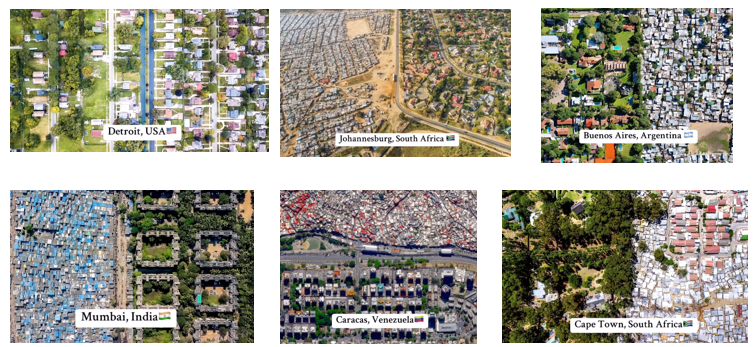
inequalities in environmental factors:
air pollution→ lower income people are exposed to higher levels of air pollution
temperature (cold/hot) and urban heat→ more concrete and less green spaces
access to green space
flooding or drought→ better parts of the city have better drainage and infrastructure
light/noise pollution→ sleep deprivation and mental health and wellbeing
inequalities in social factors:
race and ethnicity
poverty and income
benefits eligibility→ funding by governments is unequal- low income parts have less access to education, healthcare, other benefits
education and employment→ less schools, less jobs
Air Pollution-
everything that is toxic that gets into the air and affects human health, vegetation and buildings
Primary pollutants→ directly from sources e.g. volcanoes, wildfires, meat production, transport, industries, factories
Secondary pollutants→ are being transported in the atmosphere by the reaction of primary pollutants, are gases and also particles
e.g. surface ozone- reaction of volatile organic compounds and nitrogen dioxide in the presence of light and sun, high in the summertime
PM10→ all particles less than 10 micrometres
PM2.5→ all particles less than 2.5 micrometres in diameter, cannot see with naked eye, breathe into lungs and into bloodstream
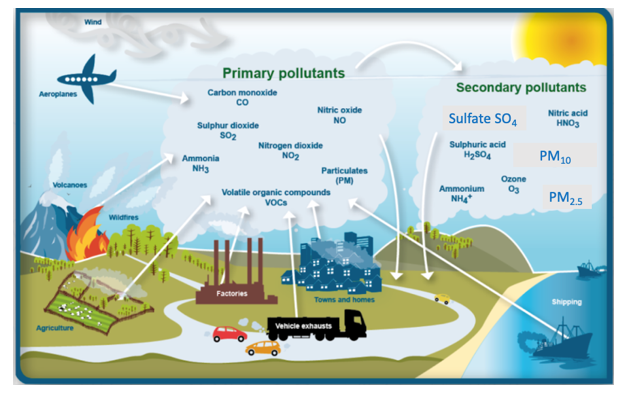
causes 8.1million premature deaths a year, 2nd cause of death in the world
affects human health:
short-term e.g. asthma, eyes itching
long-term e.g. causing cancer, pulmonary disease, cardiovascular disease
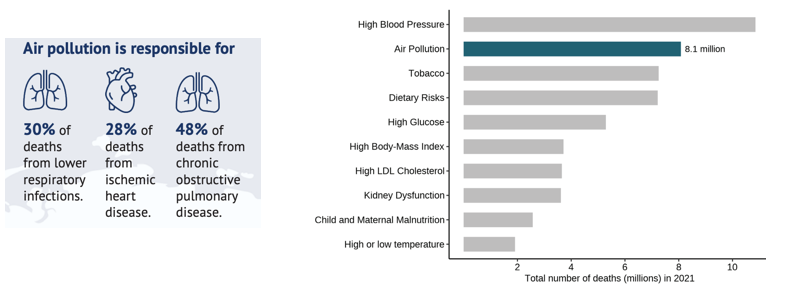
is inside homes too e.g. mould, cooking, cleaning
is invisible and has lots of economic factors→ is hard to visualise and fight against
In the UK→ causes 40,000 premature deaths estimated by Public Health England
Sheffield City Council launched a clean air program in 2015→ nitrogen dioxide and PM10 causing 500 premature deaths a year

Laws regulating air pollution-
Great Smog of London→
1953, was very cold, used coal to heat their houses
had increased soot and sulfur dioxide, air pollution got trapped at the lower levels of the atmosphere
4000 people died in those three days but caused 12,000 deaths in the long-term due to respiratory infections
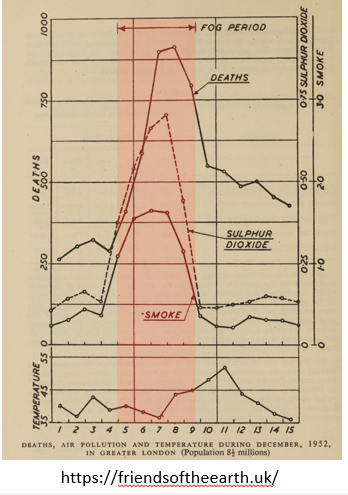
→ first clean air act in 1956- focused on smoke control, raised chimney heights
air quality standards by countries and WHO→ level above this is when human health is impacted by air pollution
if a country has more pollution due to more industry and vehicles, they will want less restrictions
difference between Scotland and England→ Scotland is cleaner
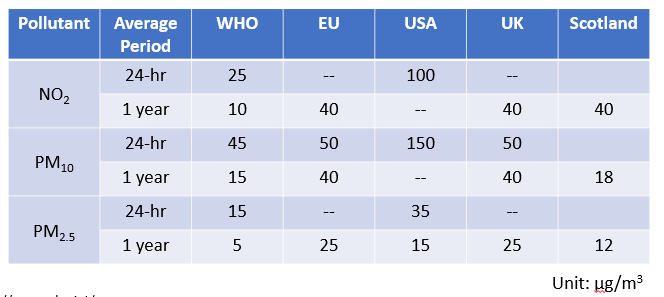
Air pollution x cities:
study:
classified cities based on economic growth→ 4 types of cities
looked at satellite images of nitrogen dioxide from European Space Agency
looked at PM 2.5 levels from human activities from a NASA satellite
mostly in emerging cities and struggling cities e.g. India and Africa
don’t have the capacity for cleaner technologies and is linked to economic growth- industries don’t control for air pollution
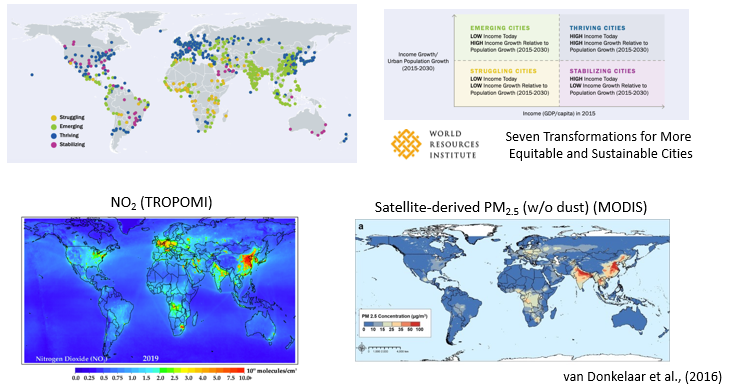
inequalities within cities:
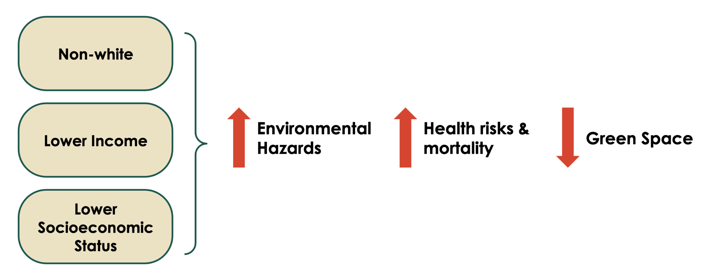
US→ redlining:
1930→ federal Home Owner's’ Loan Corporation classified neighbourhoods based on who lived there, red- immigrants or people of colour, risk to offer a loan to people from these areas
→ has stopped today but still can see effects of this today
e.g. San Francisco- levels of nitrogen dioxide correlates with where people of colour live today, less loans given, less development, less government investment, only could afford to live in redlining neighbourhoods, have higher pollution levels and are 5 degrees hotter in the summer
has affected other cities like Denver, Detroit, Chicago…
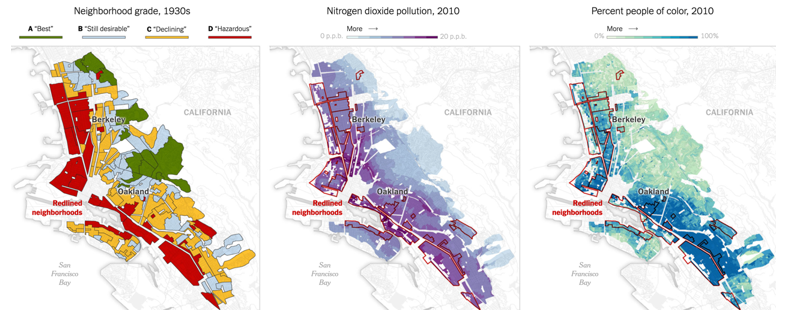
Europe:
more particles in Eastern European→ more industry and agriculture
highest levels of NO2 are in the main cities e.g. London, Barcelona, Paris, Milan→ from transport
southern Europe is warmer than Northern Europe→ higher levels of surface ozone
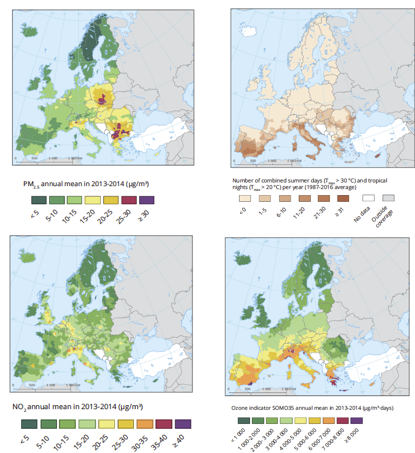
between cities in different countries:
people with less education is a proxy of lower income→ more exposure to PM10/2.5 and noisier environments
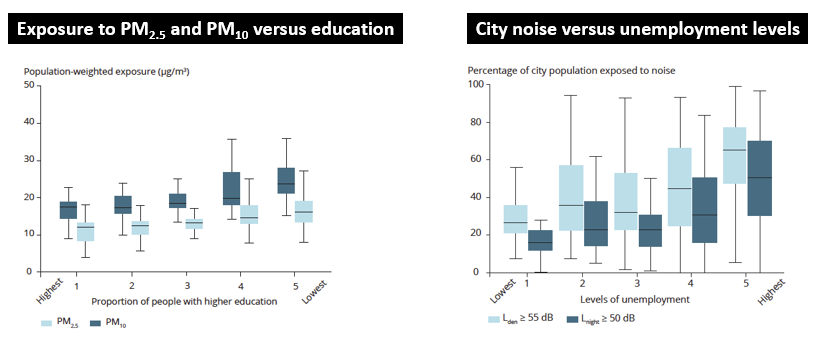
Sheffield:
was one of the most polluted cities in Europe→ steel industry
study looked at how PM10 has been changing in Sheffield since the 1850’s:
poor air quality when steel industries was high
industry closed→ cleaner air
but are still above the WHO limits of clean air
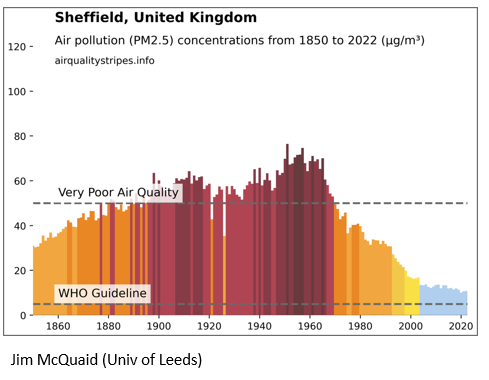
last 10 years→
both NO2 and PM2.5 have been decreasing
50% decreases in NO2 since 2014→ cleaner vehicles
PM2.5 decreases less as there are more sources of this e.g. wood burning in houses in the winter are due to 50% of particle pollution in Sheffield
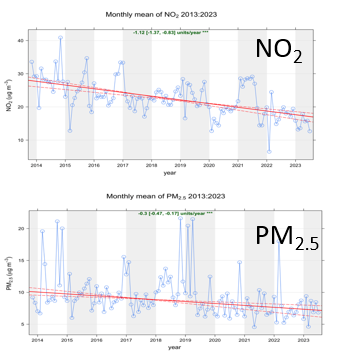
pollution is not distributed equally→
northern part of Sheffield has more non-white populations→ also has higher levels of NO2, deprivation and fuel poverty
red areas→ in the 10th percentile of the country→ houses are not heating properly in the winter time
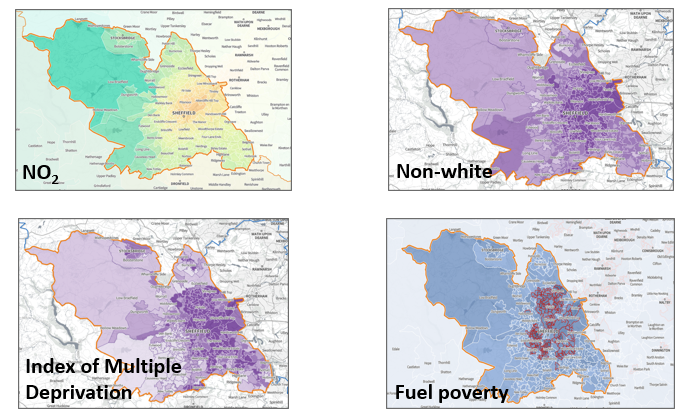
can see this inequality when looking at areas of Sheffield:
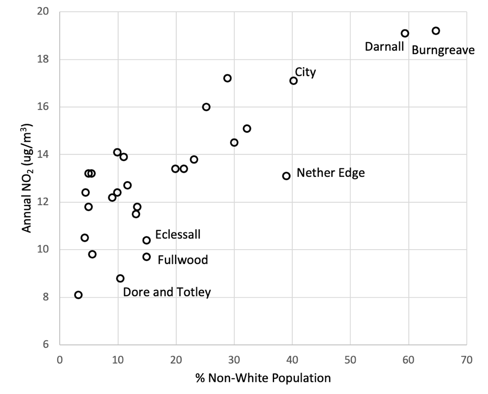
Solutions to a more clean city:
active mobility→ reduce noise and air pollution e.g. increase cycle lanes, more accessible public transport
urban planning→ more parks, plant more trees
housing→ good ventilation and insulation
participation→ empowering people
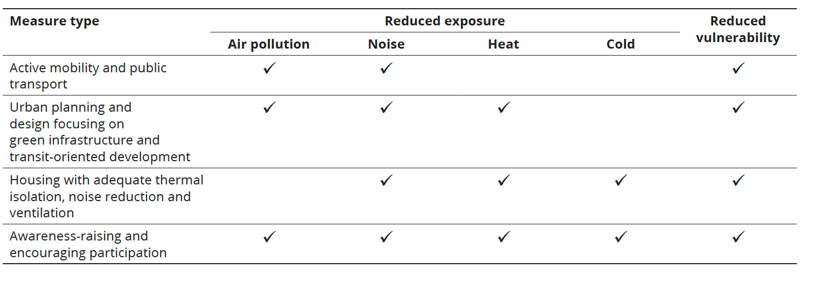
Examples of initiatives:
Barcelona Superblocks-
city planning made perpendicular and parallel roads and streets, stopped traffic in these areas (except for residents and emergency vehicles) and gave area to public whilst the traffic goes around, have access to bikes and green spaces
has reduced air and noise pollution within these areas
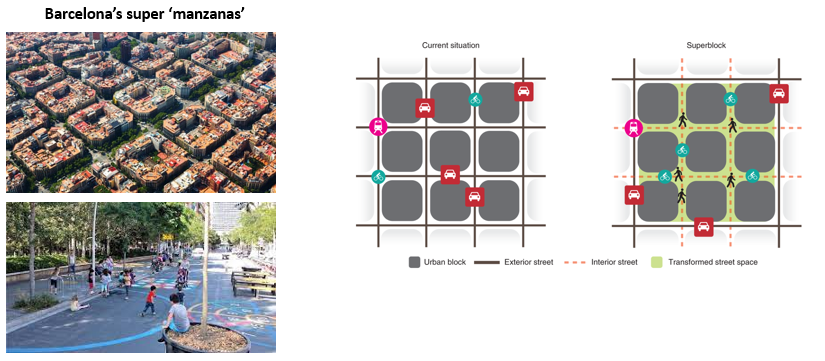
→ has been very successful
Sheffield:
School Streets-
close road in front of school gates, cleaner playgrounds and roads for children
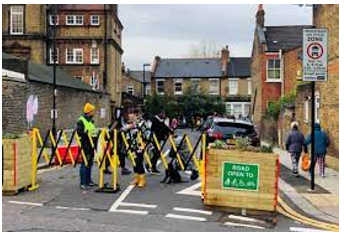
Grey to Green-
reconnect Castlegate (low income area) to the city centre
major road converted into a green space→ cycle and pedestrian area
improved resilience→ reduces flooding risk
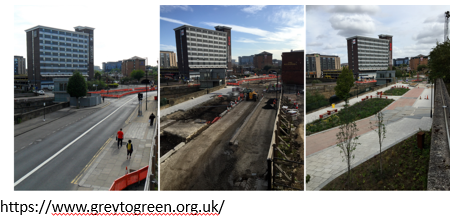
→ has been very successful
15-Minutes Cities:
have everything within 15 minutes e.g. healthcare, work, services
removing parking spaces, making green spaces and cycles lanes, investment in local neighbourhoods
e.g. Paris- plan to make it 100% cyclable
have envisioned how areas in Sheffield will look when doing this:
plan of double red lines in Eclessall Road but there was opposition by businesses so went back on this
studies show when an area is pedestrianised, businesses do better as people spend more time there and more money

Low Emission Zones-
discourage the use of the most polluting vehicles
ongoing debates on if this effective
The Line-
sustainable city being built in Saudi Arabia
will be really long and hold 9 million people in 34 km2, will have a high speed train back and forth, will run on renewables, low carbon footprints
everyone will be within 5 minutes of all services
20,000 traditional people have already been displaced

Summary-
Equitable cities prioritize social justice and inclusivity, ensuring that policies address air pollution and climate change while benefiting all residents.
Community engagement is essential—empowering people to shape urban environments and advocate for fair and sustainable policies.
Urban planning and environmental policies made today will shape future cities, highlighting the need for long-term, equitable solutions to air pollution and climate challenges.